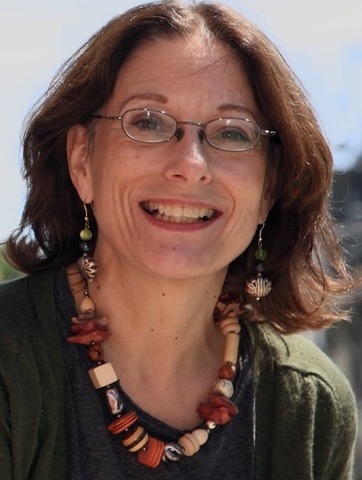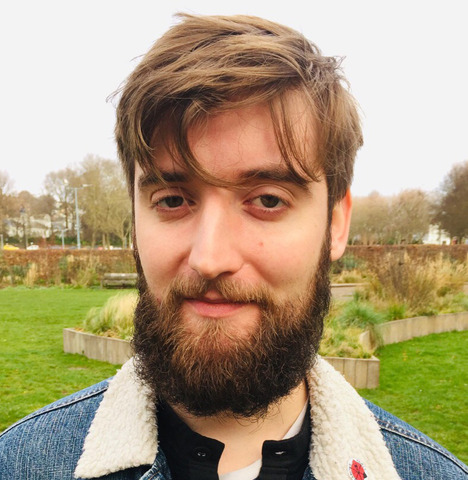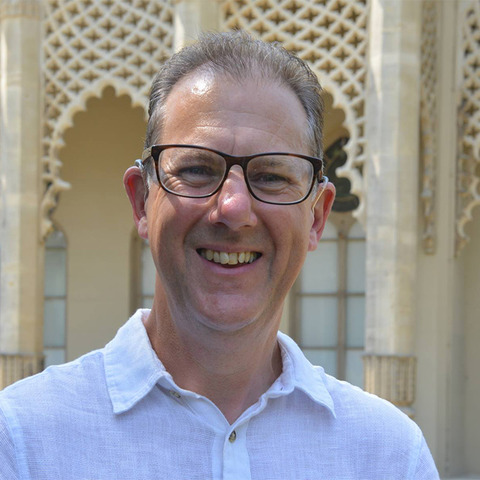St Peter’s and North Laine candidates explain why they want to be a councillor. They also answer questions sent in by the public via social media.
Not your ward? Click here to find your neighbourhood on our interactive map.
Eleven candidates are standing for the three Brighton and Hove City Council seats in the Brighton ward of St Peter’s and North Laine.
Why do you want to be a councillor?
Lizzie Deane is a full-time councillor and former local government press officer standing for re-election for the Greens.

I have been a councillor for the past eight years, so this is effectively my current profession, as it is virtually full time.
I want to continue representing local people and fighting for our values.
Rob Heale is a semi-retired housing and rehab worker standing for the Liberal Democrats.
I have lived in central Brighton for more than 35 years and know the area well.
I want to help improve facilities and services for all and am concerned about how things have deteriorated in recent years.
There are a number of important plans on the table at the moment which are likely to have big effects and we need councillors who are prepared to fight for our area.
Priority should be given to the provision of more affordable and social homes.
I also want to improve recycling in the area by providing better information.
Mike Long is a retired former solicitor who worked in the ward for almost 30 years. He is standing for the Conservatives.
I want to rescue the city from the ravages of the Labour and Green administrations.
To ensure our streets are clean, our bins are emptied, and our recycling rates improve. To deal with poor air quality.
To ensure the council does all it can to crack down on anti-social behaviour that blights some of our ward.
Nick Garside and Linda Mary Murray are also standing for the Conservatives.
Gabriel Glendale Nicholson McCook is standing for Labour.

I am a Young Labour activist and trade unionist.
I will fight for our labour movement to radically democratise our city in the interests of the many.
Sue Shanks is a former youth worker and youth work lecturer standing for the Greens.

I feel there is a real change to be made in our environment.
It is important to represent residents views and take up their issues.
I want to contribute. I was previously councillor in Withdean from 2011 to 2015
Pete West is a full-time councillor, member of the South Downs National Park Authority and managing director of the B&H Wood Recycling Project. He is standing for re-election for the Greens.

As the first elected green councillor in the city I am proud of what we have been able to achieve to make Brighton and Hove a more sustainable and fairer city.
I am honoured to have continued to receive the support of my constituents and am committed to helping further to improve St Peter’s and North Laine, for the benefit of all residents and the people who work in and visit the ward.
This is a work in progress I am very keen to continue to be a part of.
Maureen Elizabeth Winder is standing for Labour.

As an active supporter and member of the Labour Party for almost 18 years, I believe that we now have a real opportunity locally to begin putting in place the socialist policies that our city needs at this time.
We have a real opportunity to improve the quality of life of people in our community.
And we can do this, not by treating people as passive objects, but by including them and engaging actively with them at every stage, so that their desires for their lives consistently guide our actions.
Daniel Thomas Gray is standing for election. He was originally selected as a Labour candidate but is currently suspended from the party.
Gerald David O’Brien is standing as an Independent.
What are you views on the design, impact on traffic of the Valley Gardens phase three project in Old Steine which includes making Madeira Drive one way? Is this is suitable for a safe public area?
Lizzie Deane, Sue Shanks and Pete West: The Valley Gardens project was envisaged as a desperately needed green lung for the city centre and to improve walking and cycling.
Phase three covers the area that is the city’s ‘accident blackspot’ – it is a critical opportunity to cut serious injuries, many to cyclists.
The last Green council administration won £8 million of external funding to pay for the project.
Labour’s delays to the scheme threatened this hard-won cash – and left the council scrambling to get the project to completion.
In this late and rushed process, there was inadequate consultation with residents and local businesses.
Greens have pushed for better acknowledgement of the concerns raised.
We have won assurances over new cycle lane provision and have heard that organisations such as Bricycles and Friends of the Earth now on board.
Rob Heale: There has been too little consultation with the public about these plans and I expect these plans could cause more congestion by displacing traffic into residential streets.
A new park and ride would be a better way to reduce congestion so visitors can easily access the city using car parks located close to existing railway stations and bus routes.
There also needs to be a safe walking route through the Valley Gardens which is suitable for all age groups and which respects the heritage of the area and I don’t think this scheme provides that.
Mike Long: No, it is mad. The proposed traffic lights at the Pier will cause traffic jams along the sea front as far as Rottingdean.
I have no idea why Labour is insistent on this. It will hurt businesses, local residents and directly hit air quality.
Gabriel McCook and Maureen Winder: The designs are currently being drawn up to a detailed design stage.
All comments and issues raised are being addressed and we hope to see a detailed scheme which meets the needs of all residents and businesses/ visitors expected.
Those detailed designs will have to ensure that the city keeps moving while addressing the impacts of the climate change emergency and supporting a modern city where sustainable transport routes are protected and enhanced.
There is a huge problem with dog owners leaving waste behind, either in bags or just out in the open in parks and street. What will you do to tackle dog owners not picking up poo?
Lizzie Deane, Sue Shanks and Pete West: While council enforcement is an appropriate response to the most hardened offenders, peer pressure is the main driver for the considerable change in dog owner responsibility we have seen over the past few decades.
For most owners it is now unacceptable to walk away without picking up.
Of course some people still do this, especially in winter under the cover of darkness, and there is a big issue with professional dog walkers with too many charges.
Bagging and leaving is also an issue regardless of the availability of bins.
But it is only a few that are making the mess, not the many, so we need to continue to get through to them.
Residents have had success marking out poo with fluorescent paint, stencilling on pavements and putting up “there is no such thing as the dog poo fairy stickers”.
This community action is affordable and effective and raises a debate and peer pressure at the same time.
When dog owners see kids painting poo I think the message gets through.
We can support more of that action while ensuring council officers are there to give support too.
Rob Heale: I would provide poo bags for dog owners to use in parks and public spaces while also encouraging park wardens to enforce the rules and issue on-the-spot fines.
Mike Long: Zero tolerance with more patrols and prosecutions.
We welcome the new field officers and will encourage them to clamp down on this anti-social behaviour. We will ensure the maximum fines are levied.
Gabriel McCook and Maureen Winder: Our new enforcement officers who have been brought in-house are out and about in neighbourhoods, and targeting those whose antisocial behaviours are affecting all our lives.
We need to both educate and enforce our way out of this problem, and we want that message to get through to all who chose to leave dog mess across our city.
The council is planning to roll out the installation of electric charging points. To what extent do you support this and will you commit to making these electric vehicle only parking spaces?
Lizzie Deane, Sue Shanks and Pete West: Fully support this, and will certainly commit to it.
Rob Heale: I would support a charge points for electric vehicles with some dedicated parking spaces could be provided close to these electric charging points.
However there’s already a shortage of residents parking spaces so the council should carry out a survey of on street parking to identify additional parking spaces for this.
Mike Long: Yes, absolutely. Under the Greens and Labour, this programme has fallen behind.
I would like to see Brighton and Hove at the forefront of the electric vehicle revolution, and to be there we have to have the infrastructure.
It will help us achieve our aims regarding city centre air quality improvement, which is vital for public health.
Gabriel McCook and Maureen Winder: We fully support the installation of electric vehicle charging points (EVCPs), and in fact it is the Labour council that successfully bid for £300,000 funding from the government to allow the installation of 200 EVCPs.
Test sites are already in operation.
It was noted at committee last June that the scheme might need to allow for mandatory parking bays for electric vehicle charging in the event, for example, it becomes clear that electric vehicle owners are having problems accessing advisory bays, or to adapting over time to increased demand.
If you design with children in mind you also make it good for older people and create a healthier and more inclusive place that everyone can enjoy. How are you going to make the city safe and attractive for children to move around independently?
Lizzie Deane, Sue Shanks and Pete West: Create more cycle lanes across the city, with cycle links between the city’s parks, so that children can travel more easily and in areas that are greener and safer.
Most primary school children live near enough to walk to school and ideas such as walking buses can help them to do so.
Stopping parking near school gates will reduce pollution around schools and encourage parents to walk or cycle with their children.
Schools need to provide cycle parking and lockers for helmets and outdoor clothing.
Free bus travel for under 16s as in London would be a great gesture for the bus company to make.
Rob Heale: It is important that there are safe walking and cycling routes around the city and I would support building additional cycle paths where possible to help with this.
I personally also support better signage, use of safety railings at busy junctions and increased provision of public seating, along with more public recycling bins to help keep the city attractive.
Mike Long: By genuine consultation with community and voluntary groups as well as businesses.
But the city will always have a touch of ‘helping the police with their enquiries‘, that’s part of its charm .
To make children safe we need more police and community officers on the streets. Bring back the white helmets.
Gabriel McCook and Maureen Winder: We need a range of measures to be delivered across the whole city – better protected cycling and walking routes are key to this as well as a safe reliable public transport system.
We are also committed to setting up a fund to support improved community safety and neighbourhood policing measures to give people confidence in the safety and responsiveness of their local communities.
There is a general lack of council housing available across the city and many people who cannot afford market rents. How will you help people get access to a council house or flat?
Lizzie Deane, Sue Shanks and Pete West: Build more affordable housing, actually enforce the 40 per cent affordable in new developments, and lobby members of Planning Committee to be firmer on this when deciding on major applications.
Rob Heale: We need to build more affordable and social rented homes.
For this the council needs to make the best use of its land and property to provide low cost homes with proper consultation and I want our idea for housing on the Hollingbury Golf Course to be an example of how the council can be bold with how it uses its land.
An audit of long-term empty buildings and sites could also allow the council to bring these into use and provide low-cost homes.
Mike Long: Build of course, but also ensure moneys due in respect of council homes are collected, that abuses of council homes are stopped, and that homes are available for those who need them.
But Labour has a shameful record on delivery of new council homes.
They promised 500 and delivered 200. Not enough to make a small dent in solving this problem.
Conservatives are committed to building more council homes.
Gabriel McCook and Maureen Winder: We are committed to building an additional 800 council owned homes for the lowest possible rents within the next four years.
This comes on top of our living wage housing scheme with Hyde Housing, and our innovative ‘right to buy back’ scheme, where we are buying back council homes that were lost under Mrs Thatcher’s Right to Buy scheme.
This ward is blighted by graffiti with a spray-can tagging explosion spoiling large areas around London Road. What would you do about it?
Lizzie Deane, Sue Shanks and Pete West: As the Labour administration has ceased cleaning graffiti on privately owned property (unless racist or offensive) we would encourage the setting up of a neighbourhood Anti Tagging Group, similar to that set up by residents and us as councillors in North Laine and West Hill.
We hope that a future administration would fund the graffiti removal service again.
Rob Heale: I would encourage the council to put more effort into removing all graffiti that’s unsightly and offensive, as well as tags.
However I would also support more artistic works of street art in designated areas, as this contributes to the character of the city.
Mike Long: Zero tolerance. But also this is a sign of the council’s failure to support the myriad of voluntary groups in the City, which can offer so much to our young people. Conservatives trust the people, the other parties are more interested in ideologies
Gabriel McCook and Maureen Winder: Our graffiti strategy which was developed last year required additional financing which we have made available.
However, it also needs the full support of our community and our police to be able to fully deliver across the whole patch.
Graffiti is like an invasive weed and creates not just a visual problem for communities but also creates a negative impression of communities and the city for those visiting.
It is up to all of us to start taking stronger action, and we are pleased to have the additional resources and manifesto commitments to address it.







